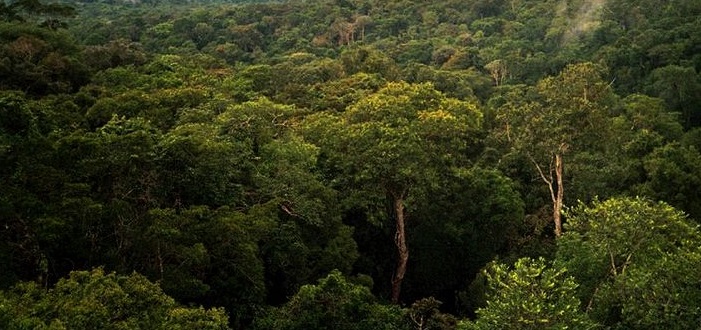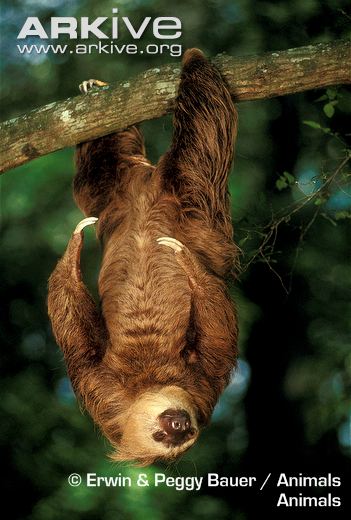
Form and Function
 Choloepus didactylus has many adaptations that allow the species to
thrive in the specific environment of the rainforests. Primarily, the
sloths’ claws and syndactylous digits allow them to securely grab on to
the limbs of trees, acting as hooks to ensure that the sloth’s grip does
not loosen. The clavicle
of Linnaeus’s two-toed sloth has adapted so the connective tissue,
including the tendons and ligaments, are differentiated according to the
work load. This provides the sloth with maximum mobility, strength, and
stamina to continually hang amidst the branches of the trees (Nyakatura,
2010). The sloths’ limbs have also evolved to be composed of multiple
types of muscles, providing the sloth with an increase in force of
flexion. This is useful because it gives the sloths more flexibility
while moving from tree to tree. Another limb adaptation is that the
ligamentum femoralis is missing in the rear leg of the sloths, giving
them a larger degree of rotation (Adam, 1999).
Choloepus didactylus has many adaptations that allow the species to
thrive in the specific environment of the rainforests. Primarily, the
sloths’ claws and syndactylous digits allow them to securely grab on to
the limbs of trees, acting as hooks to ensure that the sloth’s grip does
not loosen. The clavicle
of Linnaeus’s two-toed sloth has adapted so the connective tissue,
including the tendons and ligaments, are differentiated according to the
work load. This provides the sloth with maximum mobility, strength, and
stamina to continually hang amidst the branches of the trees (Nyakatura,
2010). The sloths’ limbs have also evolved to be composed of multiple
types of muscles, providing the sloth with an increase in force of
flexion. This is useful because it gives the sloths more flexibility
while moving from tree to tree. Another limb adaptation is that the
ligamentum femoralis is missing in the rear leg of the sloths, giving
them a larger degree of rotation (Adam, 1999).
The two-toed sloths have also learned that moving diagonally from branch to branch increases stability on the more slender/weaker branches, such as avocado tree branches. This is because the opposing forces created when walking diagonally stabilize the sloth’s midsection over the branch, preventing wobbling or uncertainty while high in the air (Nyakatura et al., 2010).
In addition to Choloepus didactylus having well adapted limbs, their
bodies are completely covered in a thick, insulated layer of adipose
tissue. This layer is larger than most tropical rainforest animals. The
adipose tissue is most important in the hands of the sloth, especially
under the hand and foot pads, because it helps to produce friction
against the sloth’s limbs and the tree branches. This friction increases
the sloth’s grip on the branches (Adam, 1999).
Since Choloepus didactylus lives in such
wet and vegetative
environments, it is well adapted for life in such conditions. The fur
of the sloth grows towards their back, which helps run water off of the sloth’s body while they are
hanging from a branch during a rainstorm. These protruding, grooved
hairs also provide the sloth with camouflage amongst the foliage of the
trees, due to the symbiotic relationship the sloths share with algae.
The presence of algae give the sloth’s fur a greenish appearance, which
makes it harder for predators to spot the sloth (Adam, 1999).
The sloths have poor eye sight, especially concerning acuity, reactions
to light, and accommodation. Due to such
limited eye sight, the sloths rely heavily on their most powerful
senses, which are those of smell, taste, and touch (Adam, 1999).
Sloths only leave the safety of
the tree canopy every 3.5 to 4.5 days to defecate or urinate. Due to such long periods between
the sloth’s excretion, the bladder is extremely large, as well as the
rectal pouch. This permits the sloth to store large amounts of waste,
which allows them to restrict their time on the ground, where they are
vulnerable to predators on the ground (Adam,
1999).